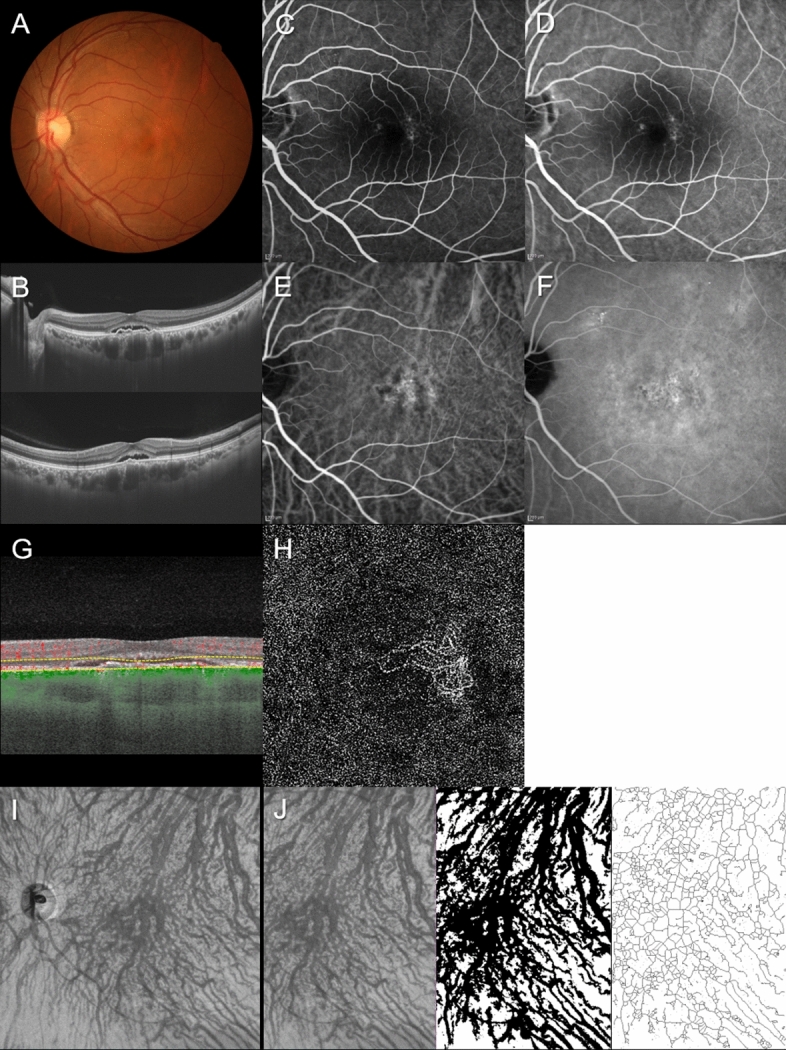Figure 3.

Images of the left eye of a 55-year-old man with pachychoroid neovasculopathy. The refraction was − 3.50 diopters. Best-corrected visual acuity was 0.00 logarithm of the minimum angle of resolution unit. (A) Color fundus photograph shows retinal pigment epithelium (RPE) abnormality accompanied by a serous retinal detachment (SRD) at the macular area. (B) 12 mm horizontal and vertical B-mode OCT images through the fovea show pachychoroid with dilated outer choroidal vessels (vortex veins). A shallow irregular RPE detachment accompanied by SRD is observed at the fovea. The central choroidal thickness is 401 µm. (C,D) Fluorescein angiography (early and late phases) shows window defects and some leakage in the macular area. (E,F) Indocyanine green angiography (early and late phases) shows dilated choroidal vessels and suspected choroidal neovascularization (CNV) at the macular area. Choroidal vascular hyperpermeability is seen around the macular area. (G,H) OCT angiography (3 mm × 3 mm) shows network vessels comprising CNV between the detached RPE and Bruch’s membrane. En face OCT image (12 mm × 12 mm) shows dilated vortex veins in the deep layer of the choroid. Horizontal watershed is lost due to anastomoses between the superior and inferior vortex veins. (I,J) En face OCT image (temporal 8 mm × 12 mm), binarized image, and skeletonized image. The area, length, and mean diameter of vortex veins are 57.3 mm2, 476 mm, and 120 µm, respectively.
